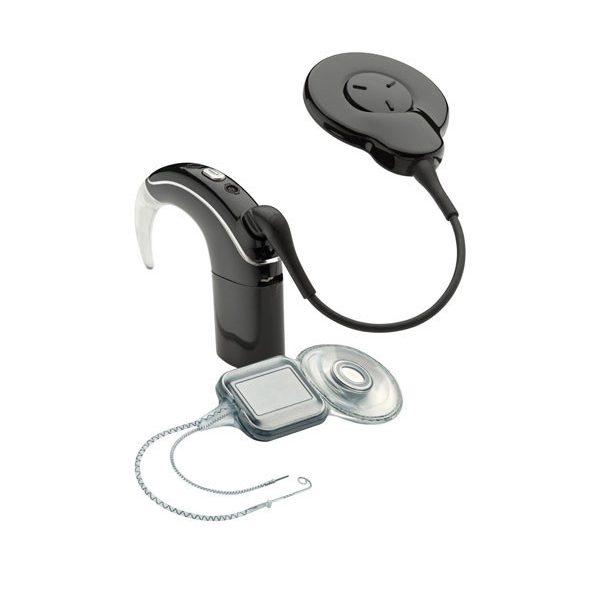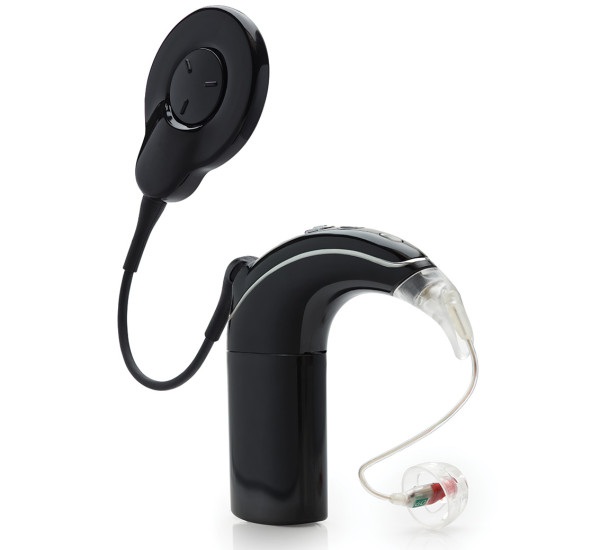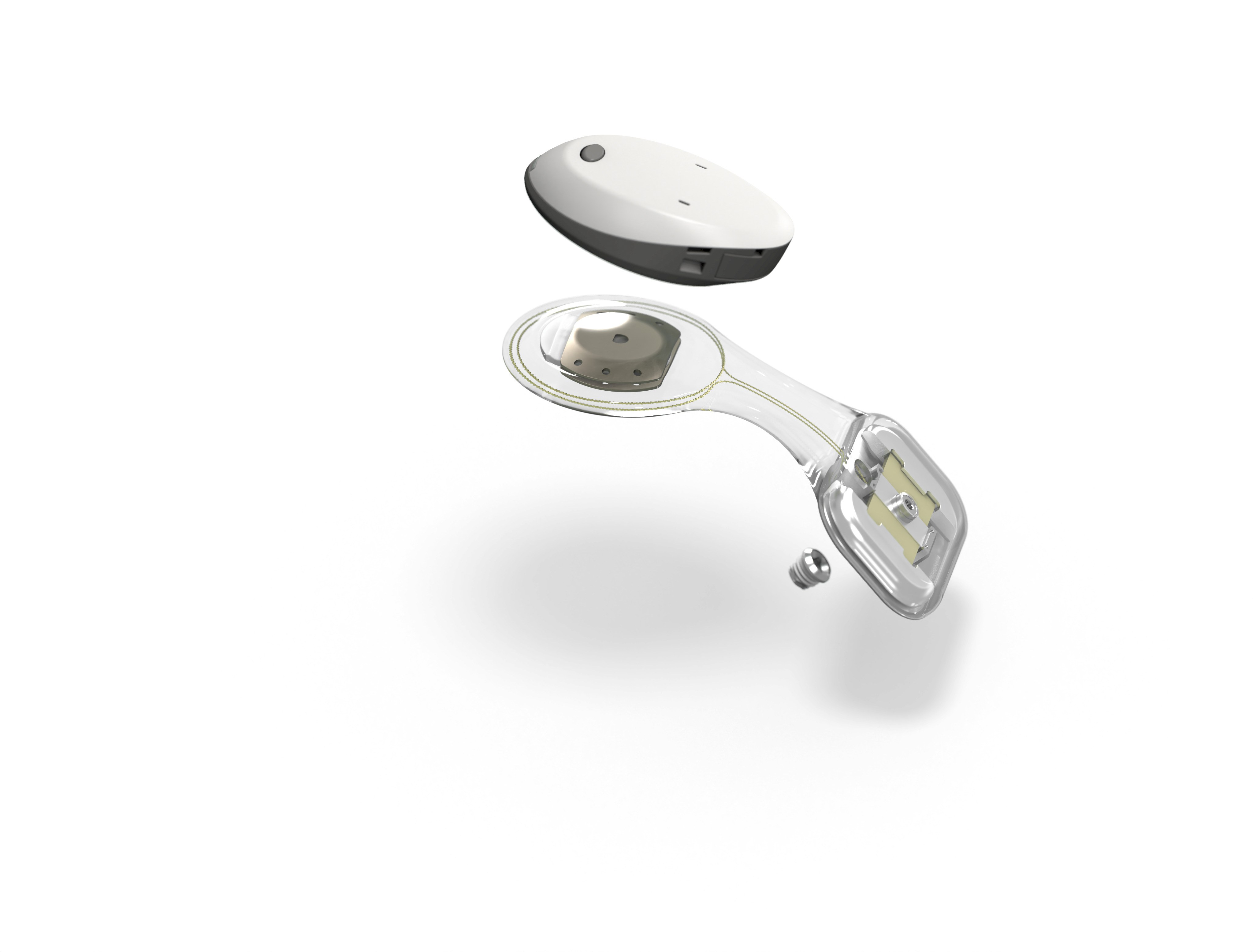Hearing implant technology
When hearing aids no longer provide the clarity and understanding you need, a hearing implant can offer a transformative solution. Unlike hearing aids, which amplify sound, cochlear implants bypass damaged parts of the inner ear to directly stimulate the hearing nerve, providing a sense of sound to people with moderately severe or profound hearing loss. By comparison, a bone conduction implant transmits sound to the cochlear via the bones of the skull.
Many people with a hearing implant are able to hear more easily, understand speech better and enjoy improved clarity of sound.

Cochlear Implants
What is a cochlear implant?
A cochlear implant is a surgically implanted medical device for people with significant, permanent hearing loss. It is the first implantable technology able to restore a human sense - hearing. Unlike a hearing aid that simply makes sound louder, a cochlear implant bypasses the damaged parts of the inner ear and uses electrical stimulation to directly stimulate the hearing nerve.

Learn more
How does a cochlear implant work?
Is a cochlear implant right for you?
A cochlear implant may be of benefit if you have a moderately severe to profound hearing loss in either one or both ears and you gain limited speech understanding from conventional hearing aids.
A cochlear implant may be suitable, therefore, if you have experienced a progressive or sudden onset hearing loss in both ears but also if you have single-sided deafness.
Your adaptation to electrical stimulation and the benefit you may receive from a cochlear implant will be influenced by your hearing history. It is helpful if you have had some hearing in the past, used hearing aids and developed spoken language skills.
Is a cochlear implant suitable for single-sided deafness?
Advances in hearing implant technology and clinical evidence supporting the benefit of hearing with two ears means a cochlear implant is now a suitable treatment option for many people with Single-Sided Deafness (SSD).
Unlike a bone conduction implant or a CROS hearing aid for SSD, a cochlear implant uses the hearing pathway of the deafened ear. This means you will be hearing sound on your deafened side rather than transferring sound to your better hearing ear.
By restoring hearing to your deafened ear, you will be able to hear and listen with both ears. Over time you will adapt and learn to integrate information from both ears for more natural hearing. This may allow you to hear and understand speech better in noisy environments, locate where sounds are coming from and improve your ease of listening.
What can you expect from a cochlear implant?
Many people with a cochlear implant are able to hear more easily, understand speech better and enjoy:
- Improved awareness of environmental sound
- Improved ease of listening
- Improved confidence in conversation
- Improved listening in social situations and in the workplace
- Improved hearing over distance
Additional benefit may also be gained when a cochlear implant is used in conjunction with lip-reading and/or a hearing aid in the opposite ear.
Hybrid (Electroacoustic) Implants
What is a hybrid (electroacoustic) implant?
A hybrid (electroacoustic) implant may be suitable if you have a mid-high frequency hearing loss with good preservation of low frequency natural hearing. In this situation, hearing preservation surgery provides the opportunity for you to enjoy the best of both worlds.
A hybrid (electroacoustic) implant combines conventional acoustic amplification with electrical stimulation to provide a high quality, more natural sound. While the acoustic component of the device amplifies low frequency natural hearing, the cochlear implant provides access to mid-high frequency sound via electrical stimulation.

Learn more
How does a hybrid cochlear implant work?
Is a hybrid cochlear implant right for you?
A hybrid (electroacoustic) cochlear implant may be of benefit if you have a steeply sloping, mid-high frequency hearing loss with good preservation of low frequency hearing and you gain limited speech understanding from conventional hearing aids.
If you suffer from a significant high frequency hearing loss, it is very difficult for hearing aids alone to provide you with good access to these sounds. The electrode array of the cochlear implant will allow you to hear high frequency sounds better. These sounds are particularly important for speech understanding and successful communication. Combining high frequency information with your natural low frequency hearing, aided by the acoustic component of the device, will optimize your hearing experience.
What can you expect from a hybrid cochlear implant?
Many people with a hybrid (electroacoustic) cochlear implant are able to hear high frequency sounds more easily, understand speech better and enjoy:
- Improved awareness of high frequency environmental sound (e.g. alarms, sirens, doorbells, telephone ringing, birds singing)
- Improved ease of listening
- Improved confidence in conversation
- Improved listening in social situations and in the workplace
- Improved hearing over distance
Bone Conduction Implants
What is a bone conduction implant?
Bone is an excellent conductor of sound. A bone conduction implant takes advantage of this property by transmitting sound to the cochlear (inner ear) through the bones of the skull.
A bone conduction implant system has two parts:
- The implant, which is surgically positioned in the bone behind the ear. The type of implant will vary depending on the bone conduction system chosen.
- The sound processor, which connects to the head via an abutment (Connect System) or via magnetic attraction (OSIA, Bonebridge and Attract Systems).

How does a bone conduction implant work?
OSIA system
Bonebridge system
Connect system
Attract system
Learn more
Is a bone conduction implant right for you?
A bone conduction implant may be of benefit if you have a conductive or mixed hearing loss and you are unable to wear conventional hearing aids for medical or anatomical reasons. A bone conduction implant may also be of benefit if you have single-sided deafness.
There are different types of bone conduction implants including OSIA, Bonebridge, Connect, and Attract systems. The bone conduction system most suitable for you will depend not only on your personal preferences but also on your hearing loss, skin and bone condition.
You can trial a bone conduction sound processor on a soft-band prior to surgery to help you decide if it is right for you.
Is a bone conduction implant suitable for single-sided deafness?
A bone conduction implant is a suitable treatment option for many people with Single-Sided Deafness (SSD).
Unlike a cochlear implant for SSD, a bone conduction implant uses the bone's natural ability to conduct sound to send information from your poorer hearing side to your better hearing ear.
The bone conduction implant is positioned on your poorer hearing side and bypasses your non-functioning cochlea to enable your better hearing ear to receive sound information from both sides of the head. This may improve your sound awareness and ease of listening in a variety of situations including meetings in the workplace, driving in the car and talking at the dinner table.
What can you expect from a bone conduction implant?
Many people with a bone conduction implant can hear more easily, understand speech better and enjoy:
- The freedom of hearing without an ear mould in the ear
- More consistent and reliable hearing, unaffected by chronic ear conditions or anatomical issues
- Improved clarity and awareness of sound
- Improved confidence in conversation
- Improved listening in social situations and in the workplace
- Improved hearing over distance